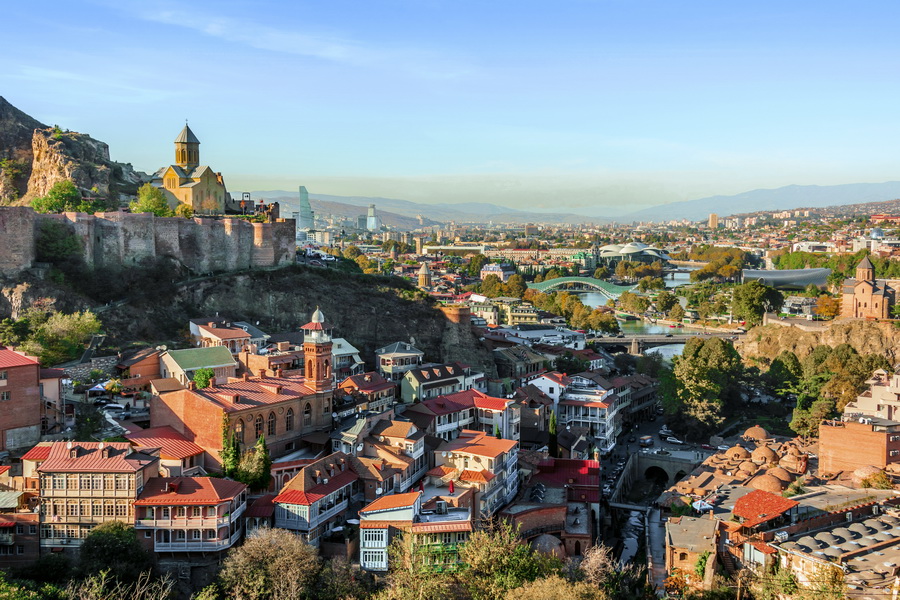
This guide to the top 13 things to do in Tbilisi will take you through the most culturally rich, visually striking, and meaningful experiences Georgia’s capital has to offer. From ancient temples and fortresses to contemporary landmarks, quiet parks, and museums, each stop opens a window into the city’s layered past and vibrant present.
Some sites, like Narikala Fortress, are as old as the city itself, while others, such as the Peace Bridge, reflect modern Tbilisi’s evolving identity. While many highlights are clustered in the city center, others lie just outside – tucked into hillsides or 20 to 30 kilometers beyond the urban edge.
Whether you prefer a slow stroll or a deep cultural dive, this list captures the places and experiences that define Tbilisi. Just a day won’t do it justice – we recommend setting aside at least two to three days to fully explore its most essential sights.
Narikala Fortress
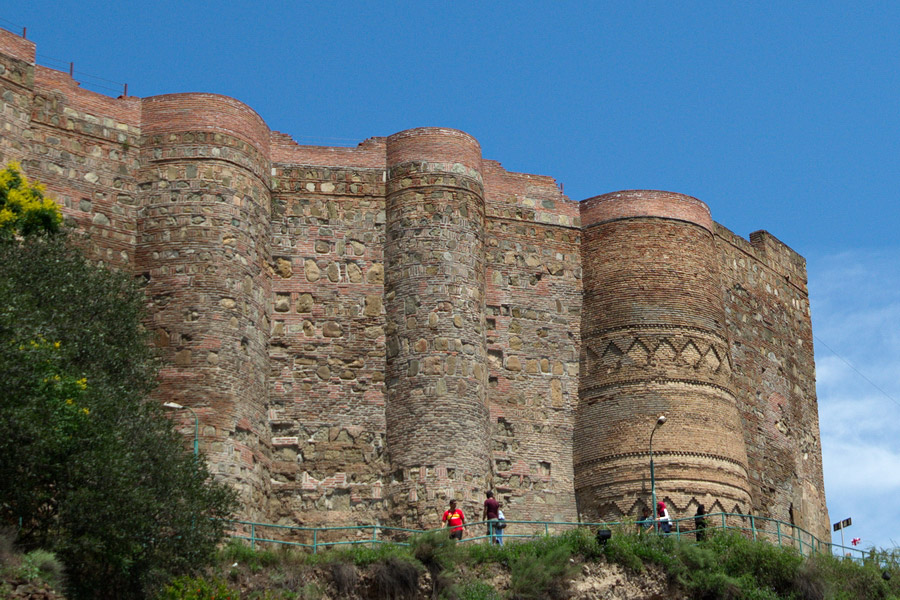
Narikala Fortress is Tbilisi’s oldest monument and one of its most enduring symbols. Built in the 4th century AD, around the time the city itself was founded, the fortress has been expanded and rebuilt many times throughout history. Much of its current form dates to the 7th and 8th centuries, when Tbilisi was under Arab rule. Originally called Shuris-Tsikhe (“enviable fortress”), the name Narikala – meaning “little fortress” in Turkic – was adopted during the Mongol era.
Today, Narikala is one of the city’s most visited landmarks. You can hike up from the Old Town or take the cable car from Rike Park. The panoramic view from the top is unforgettable: the winding streets of the Old Town below, the Kura River slicing through the city, and the modern skyline rising beyond. If you're deciding what to do in Tbilisi first, a visit to Narikala is the perfect place to start.
Metekhi Church and Vakhtang Gorgasali Statue
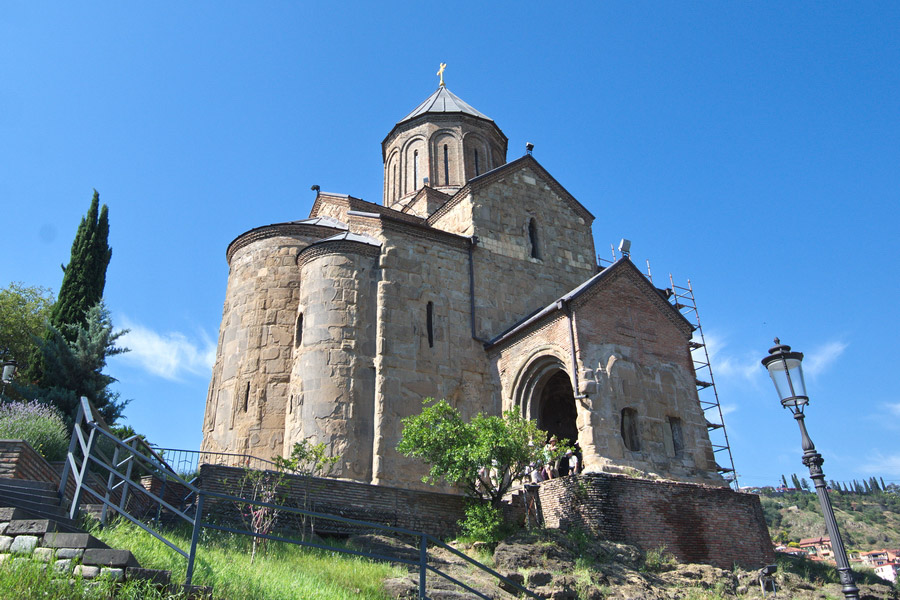
Perched on a rocky cliff above the Kura River, Metekhi Church is one of Tbilisi’s most quietly powerful historic sites. This 12th-century structure stands on the ruins of an earlier royal complex that once included a castle, monastery, and palace – a residence of Georgian kings. Though much of it was destroyed in later invasions, the church survived and became the final resting place of Georgia’s first female martyr, Queen Shushanik Ranska.
The small terrace in front of the church offers a view across the river to Narikala Fortress and features a statue of Tbilisi’s legendary founder, King Vakhtang Gorgasali on horseback. Stopping here is one of the more contemplative things to do in Tbilisi, offering a moment of calm between historic layers and city views.
Bridge of Peace
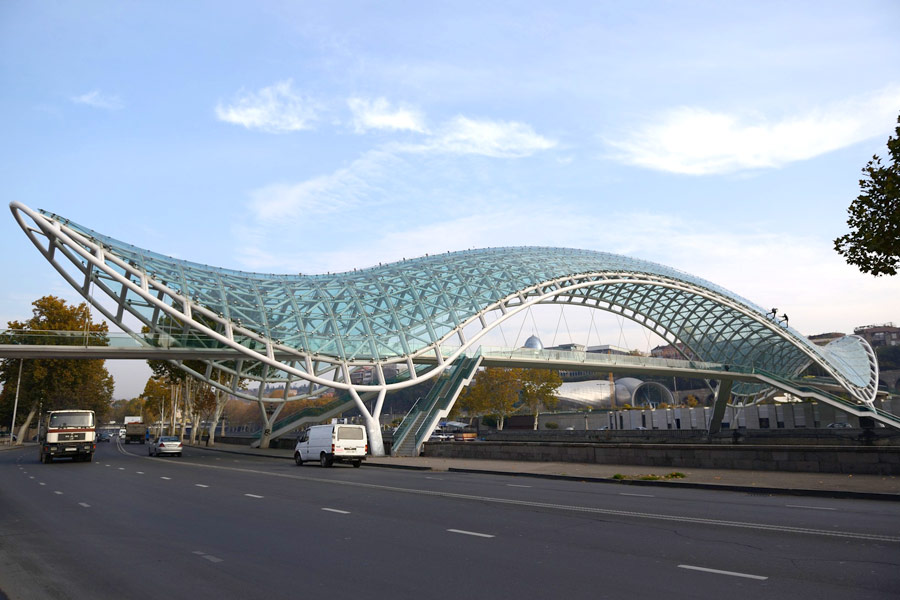
The Bridge of Peace is one of Tbilisi’s most striking modern landmarks – a sweeping glass-and-steel pedestrian bridge spanning the Kura River. Completed in 2010, it was designed by Italian architect Michele De Lucchi, with components fabricated in Italy and assembled on site. At 156 meters long, the bridge connects the historic Old Town to the more contemporary Rike Park.
During the day, its turquoise glass structure catches the light, offering bold contrast to the older architecture nearby. But it’s after sunset that the bridge becomes something extraordinary: illuminated by 10,000 LED lamps, it sends out a Morse code message that spells the names of the chemical elements in the human body. Crossing the Bridge of Peace at night is one of the most visually memorable things to do in Tbilisi – a brief but brilliant encounter with the city’s modern identity.
Sameba Cathedral (Holy Trinity Cathedral of Tbilisi)
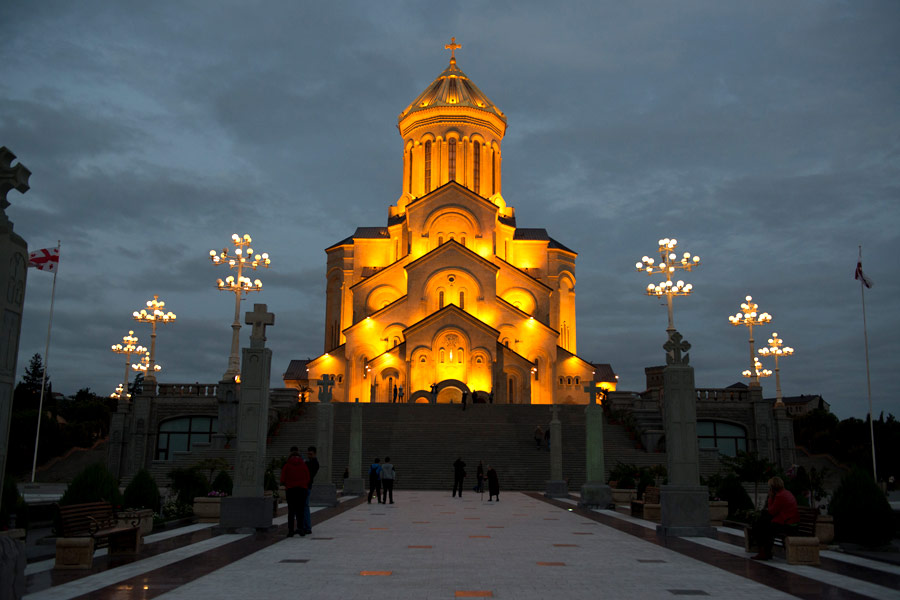
Sameba Cathedral, officially known as the Holy Trinity Cathedral of Tbilisi, is the tallest church in Georgia, rising 101 meters above the city. Visiting this landmark is one of the most awe-inspiring things to do in Tbilisi, not only for its spiritual weight but also for its architectural grandeur. Before Sameba, the tallest church in the country was Alaverdi Cathedral, which stood at 50 meters.
The cathedral’s golden dome is visible from almost anywhere in the city and glows like a candle flame when lit at night. Construction began in 1995 and was completed in 2004. The complex covers 5,000 square meters, holds over 15,000 people, and includes the residence of the Patriarch of Georgia, a seminary, a monastery, and several smaller chapels.
Mtatsminda and Surroundings
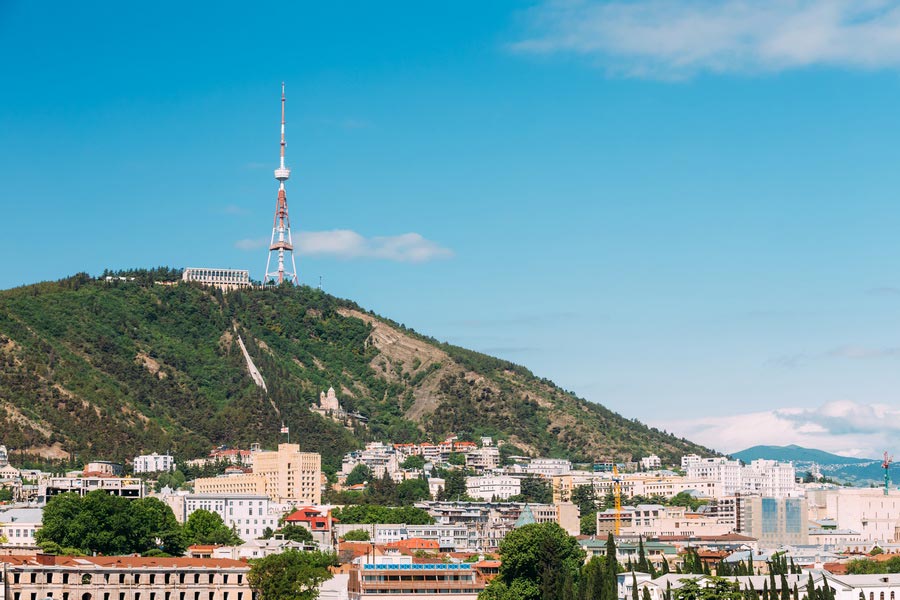
The area offers something for every interest: an amusement park with panoramic views, the iconic 270-meter-tall TV tower, Turtle Lake, and the Mtatsminda Pantheon. In summer, Turtle Lake becomes a city favorite, with a beach, cafes, and open-air music in the evenings. The Pantheon, where Russian writer Alexander Griboyedov is buried, is a tranquil resting place for many notable Georgian and Russian cultural figures.
Rezo Gabriadze Theater and Clock Tower
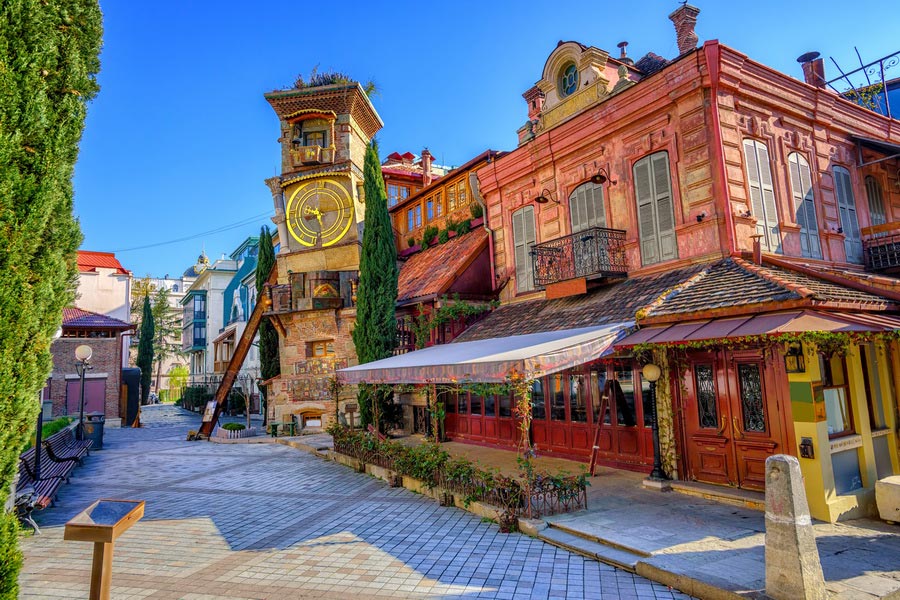
Rezo Gabriadze was a visionary figure in Georgian culture – a director, screenwriter, playwright, sculptor, and artist whose creativity left a lasting mark on Tbilisi. In 1981, he founded a puppet theater in the Old Town, where his own works came to life on stage. Though Gabriadze passed away in 2021, his theater remains one of the city’s most beloved artistic landmarks.
Over time, the site grew into a whimsical ensemble. In 1996, Gabriadze opened the “Ne Goryuy!” (“Don’t Be Sad!”) café in front of the theater, and in 2010, he added a handmade clock tower, complete with a tiny puppet show that plays twice daily. Watching the performance or simply pausing here to take in the details is one of the most creative and quietly delightful things to do in Tbilisi.
National Museum of Georgia

The National Museum of Georgia isn’t a single building but a network of more than ten institutions located across Tbilisi and other Georgian cities. Its main branch, situated on Rustaveli Avenue, houses an extensive collection that reflects the country’s rich cultural, artistic, and historical heritage – from prehistoric artifacts to contemporary art.
If you're looking for things to do in Tbilisi that are especially enriching for those who love history, archaeology, or art, this museum is a standout. Inside, you’ll find everything from ancient gold and medieval Christian icons to 20th-century Georgian paintings and rotating exhibitions. A single visit may only scratch the surface.
Tbilisi Sulfur Baths (Abanotubani)
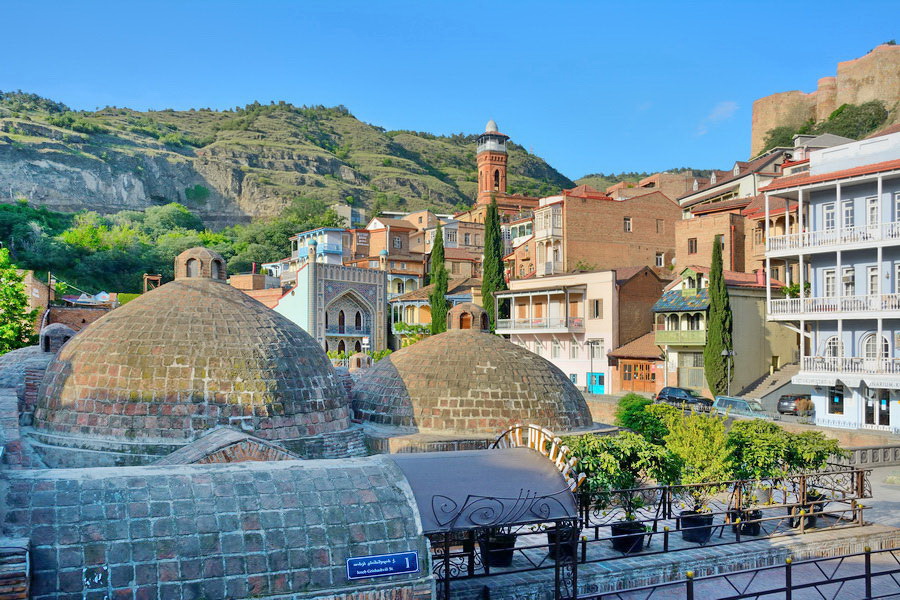
The warm sulfur springs of Abanotubani have been known since the founding of Tbilisi – and may have even inspired the city’s name, which translates as “warm place.” The bathhouses standing today date back to the 17th and 18th centuries, though the tradition is much older. Over time, they became iconic features of the city, visited by writers like Dumas and Pushkin, and once considered prized possessions among the local elite.
Each bathhouse has its own distinct style, with unique facades and interiors. The Orbeliani Bath, also known as the Blue Bath, is famous for its colorful Persian-style tilework, while the Irakli Bath is believed to be the oldest still in use. If you're exploring things to do in Tbilisi that blend history, architecture, and local tradition, taking a dip in one of these sulfur baths is a timeless experience.
Tbilisi Botanical Garden
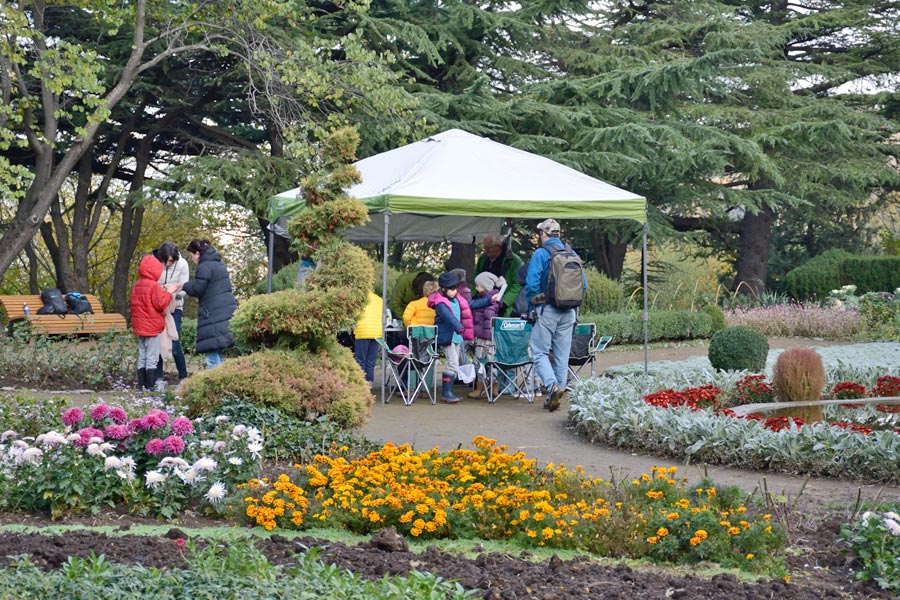
Tucked behind Narikala Fortress, the Tbilisi Botanical Garden offers a peaceful escape right in the center of the city. Spanning 128 hectares, it features shaded walking paths, arched bridges, gazebos, and small waterfalls – ideal for a quiet stroll, a scenic bike ride, or nature photography away from the city’s noise.
Once the royal gardens of Georgian rulers, the site evolved into a dendrarium and was officially established as a botanical garden in 1845. Today, it hosts more than 3,500 plant species, including rare and exotic varieties, and stands among the oldest botanical gardens in the region. For travelers seeking outdoor things to do in Tbilisi that combine nature and history, this green retreat is hard to beat.
Dry Bridge Flea Market
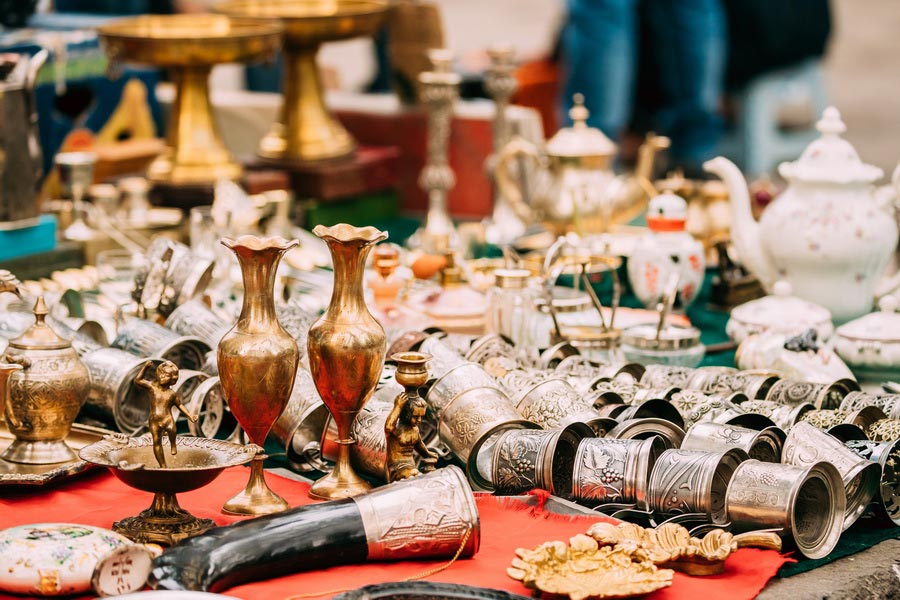
The Dry Bridge Flea Market in central Tbilisi is a paradise for collectors, vintage lovers, and curious wanderers. What began in the 1990s as a way for people to sell personal belongings during tough times has grown into a vibrant open-air market filled with Soviet memorabilia, Georgian handicrafts, paintings, books, dishes, jewelry, posters, and one-of-a-kind antiques.
Browsing the stalls here is one of the most distinctive things to do in Tbilisi, especially on weekends when the market is at its liveliest. Sellers lay their items directly on cloths spread across the pavement, giving it a raw, informal charm. It’s the kind of place where every item has a story – and if you look closely, you just might find a piece of history to take home.
If you're looking for what to do in Tbilisi beyond visiting the main landmarks, there’s still plenty to explore. Just outside the city center, you'll find scenic spots, cultural sites, and lesser-known corners that offer a different perspective on the capital. Here are a few more places that add depth to any visit.
Bethany Monastery
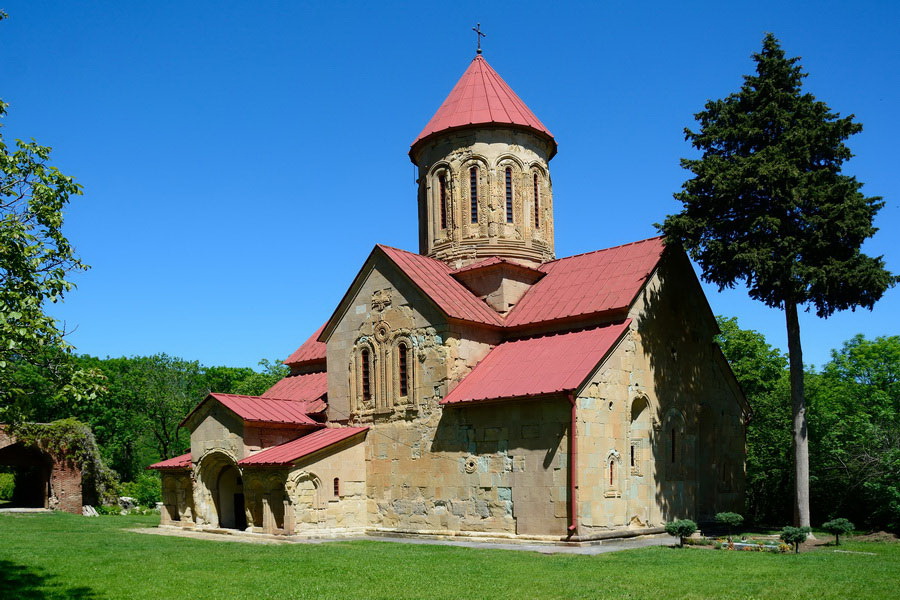
About 35 kilometers from Tbilisi, nestled in the mountains, sits the quiet Bethany Monastery – a 12th-century male monastic complex best known for its exceptional frescoes. These vivid murals are considered the site’s greatest treasure and stand among the most impressive examples of medieval Georgian art.
The monastery’s early history remains largely unknown, though it reemerged in the 1850s after a long period of abandonment and has since undergone careful restoration. Peaceful, remote, and artistically rich, Bethany offers a rewarding detour for those interested in sacred architecture and hidden corners of Georgian heritage.
Ujarma Fortress
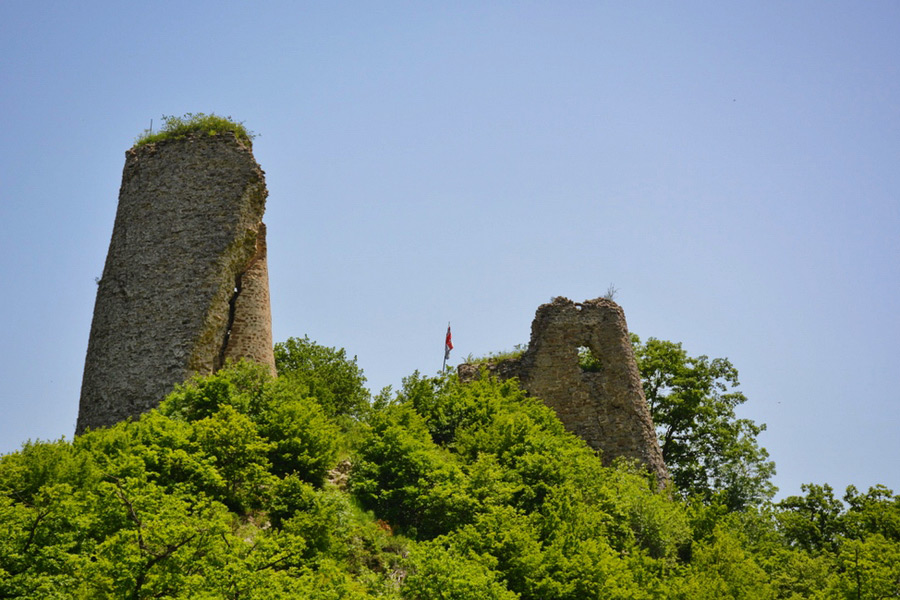
Located about 40 kilometers from Tbilisi, Ujarma is a once-thriving fortress town known for its powerful stone walls and weathered tower ruins. Founded in the 3rd century AD, it served as a royal residence and held strategic importance for early Georgian rulers.
Ujarma’s golden age came in the 5th and 6th centuries, but the fortress declined after the Mongol invasions and was gradually overtaken by the surrounding mountain forests. Today, thanks to a road built in 2010, the site is once again accessible – offering visitors a striking glimpse into Georgia’s early statehood and military architecture.
Martkopi Monastery

Martkopi Monastery lies about 35 kilometers from Tbilisi, set in a peaceful forest on the slopes of the mountains. Founded in the 6th century by Anton of Martkopi – one of the revered Assyrian Fathers and a pioneer of Georgian monasticism – the monastery is now recognized as part of Georgia’s cultural heritage.
The complex remains an important spiritual site, surrounded by natural beauty. A short trail from the monastery leads to Saint Anton’s Pillar, where a modest hike rewards visitors with sweeping views of the surrounding landscape.

